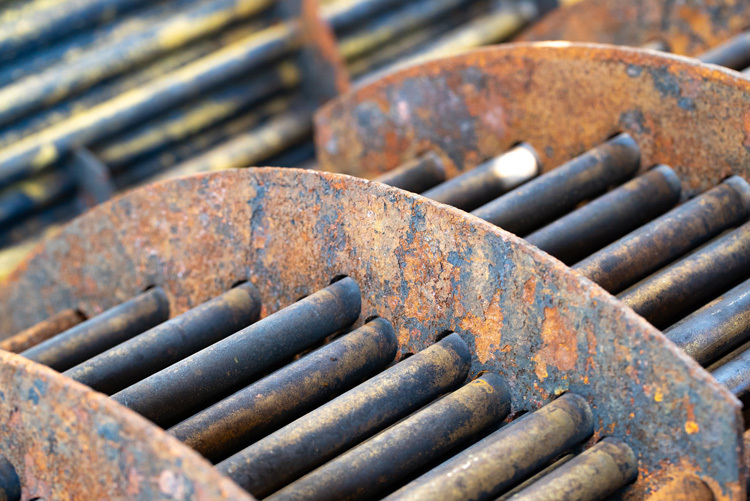Introduction
Heat exchanger fouling is a common issue in various industries, where unwanted material accumulates on the heat exchanger surfaces, reducing its efficiency. This buildup can hinder heat transfer, increase energy consumption, and lead to equipment failure. Understanding the causes, prevention methods, and cleaning techniques for fouling is crucial for maintaining optimal performance and minimizing downtime in heat exchanger systems.
Causes of Heat Exchanger Fouling
Particulate Fouling
This type of fouling occurs when solid particles suspended in the fluid, such as dirt, rust, or other debris, accumulate on the heat exchanger surfaces. Particulate fouling is particularly prevalent in systems where unfiltered fluids are used, or where corrosion is present.
Chemical Reaction Fouling
Chemical reaction fouling occurs when the chemical composition of the fluid changes under certain operating conditions, such as high temperature or pressure. This leads to the formation of solid deposits on the heat exchanger’s surfaces. For example, in systems involving hydrocarbons or organic fluids.
Biological Fouling
Also known as biofouling, this type of fouling results from the growth of microorganisms like bacteria, algae, and fungi. These organisms adhere to heat exchanger surfaces, particularly in water-cooled systems, forming biofilms. As these biological materials accumulate, they can severely limit heat transfer and clog fluid pathways.
Scaling
Scaling is the buildup of solid mineral deposits, such as calcium carbonate, that precipitate out of the water when it is heated. These deposits adhere to the heat exchanger surfaces and create a thick, hard layer that acts as an insulator. Scaling is especially common in areas with hard water, where minerals are present in significant quantities.
Corrosion Fouling
Corrosion fouling results from chemical reactions between the fluid and the heat exchanger’s metal surfaces. Corrosive fluids or conditions (e.g., acidic environments) can cause metal surfaces to degrade, forming rust or other compounds that accumulate on the heat exchanger.
Prevention of Heat Exchanger Fouling
Filtration Systems
Installing high-quality filtration systems can effectively remove suspended particles from fluids before they enter the heat exchanger. Regular maintenance of these filters, such as replacing or cleaning them, is essential to prevent particulate fouling.
Water Treatment
Water-cooled systems benefit significantly from proper water treatment practices. Chemical additives, such as anti-scalants or corrosion inhibitors, can prevent scaling and corrosion from occurring. Adjusting water chemistry to maintain optimal pH levels and reducing the presence of dissolved minerals also help mitigate fouling risks in water-based systems.
Biocide Application
Biological fouling can be minimized through the controlled use of biocides, which inhibit the growth of microorganisms. Biocides can be introduced into the cooling water system periodically or continuously, depending on the system’s risk level for biofouling.
Fluid Flow Control
Optimizing fluid velocity within the heat exchanger is crucial for reducing the likelihood of fouling. Slower fluid flow can result in particles settling on surfaces, while excessively fast flow rates can cause erosion. \
Surface Coatings
Anti-fouling surface coatings can be applied to heat exchanger surfaces to reduce the adhesion of deposits. These coatings are especially useful in systems where biofouling or chemical reaction fouling is common.
Cleaning Techniques for Heat Exchanger Fouling
Mechanical Cleaning
Mechanical cleaning involves the use of physical tools, such as brushes, scrapers, or high-pressure water jets, to remove foulants from heat exchanger surfaces. It is particularly effective for removing hard deposits like scale.
Chemical Cleaning
Chemical cleaning uses cleaning agents, such as acids, alkalis, or specialized solvents, to dissolve and remove deposits from heat exchanger surfaces. This method is highly effective for cleaning biofouling, scaling, and corrosion products.
Ultrasonic Cleaning
Ultrasonic cleaning involves the use of high-frequency sound waves to dislodge foulants from the heat exchanger surfaces. This method is especially useful for cleaning hard-to-reach areas or heat exchangers with complex geometries.
Hydroblasting
Hydroblasting, or high-pressure water jetting, is a cleaning technique where high-pressure water is directed onto heat exchanger surfaces to remove fouling. This method is highly effective for removing tough deposits, such as scale or biofilm.
Online Cleaning Systems
Some modern heat exchangers are equipped with online cleaning systems that operate continuously without interrupting operations. These systems use automatic cleaning devices, such as sponge balls or brushes, to clean surfaces while the heat exchanger is in operation.
Conclusion
Heat exchanger fouling is a significant challenge that can impact performance, energy efficiency, and equipment longevity. By understanding the causes of fouling, implementing effective prevention strategies, and applying appropriate cleaning techniques, industries can maintain optimal system performance, reduce operational costs, and extend the lifespan of heat exchangers. Proper maintenance and proactive measures are key to ensuring long-term efficiency in heat exchanger systems.

